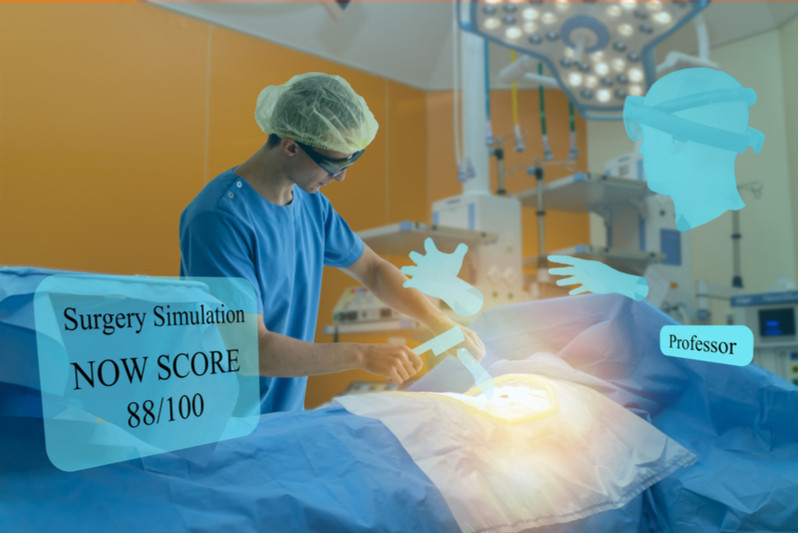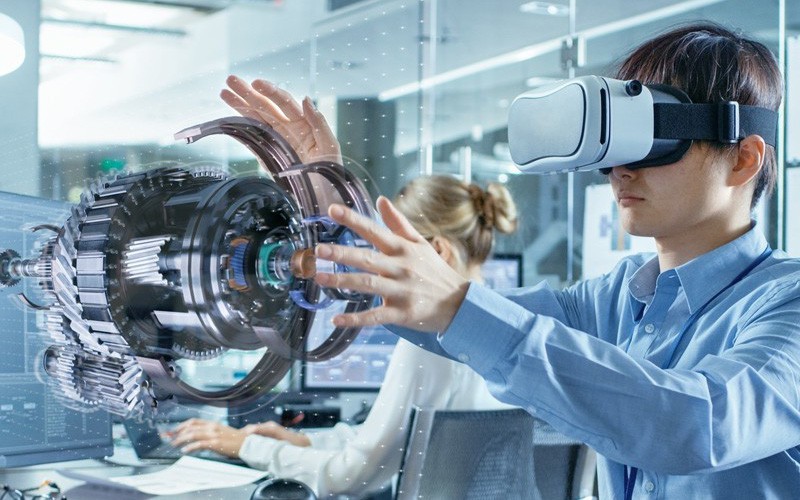What Are Virtual Laboratories and How Do They Work in eLearning?
- Created at:
- Updated at:
Whether you teach students or train employees, a virtual laboratory can help you take your eLearning course to the next level. You can engage your learners better, improve their knowledge retention, and help them master the learning material. Here’s a quick look at virtual labs - what they are, how you can use one for educational or business purposes, and what benefits your learners can experience.
What Are Virtual Labs?
Virtual labs are interactive online environments that support simulation-based learning. They let you create real-life simulations for conducting scientific experiments or engaging in other processes that may not be practical in physical classrooms.
To set up a virtual lab, you can utilize virtual classroom software that lets you create online classrooms, interactive video animations, and simulations of real-world scenarios.
You can also integrate VR and AR technologies with your eLearning tools to create a 3D learning environment.

Virtual labs are excellent eLearning tools for teaching chemistry, biology, physics, and other sciences in an online environment. They’re also great for onboarding and training employees who need to conduct various scientific experiments in a lab.
However, virtual labs aren’t beneficial only for scientific purposes. They can help web developers and web designers test out various features before launching a website. That way, they can make sure the site performs impeccably once it goes live. Avid programmers can also learn how to code in a virtual lab.
If you’re in the construction industry, you can help employees train in a virtual lab to make sure they do their job safely and effectively once they set foot on a physical site.
The same goes for manufacturing, mining, healthcare, and other industries with high-risk environments.
7 Benefits of Virtual Labs in eLearning

The examples above have certainly given you some idea of how virtual labs can improve learning outcomes. Let’s dig deeper into all the ways they can make eLearning more effective.
1. Engaging with real-life simulations
When learners are engaged in a virtual simulation of a real-world environment, they can see how something operates, such as an industrial machine. They can learn how to perform various tasks before actually doing it in real life. That’s especially important if you have limited equipment or no access to a physical lab where your learners could see first-hand how something works.
2. Explaining complex concepts
You could be the master of explaining various complex or abstract concepts, but theory can’t even come close to real-life applications. A virtual lab that visualizes such concepts can help your learners understand them fully. For instance, they can explore various chemical reactions, examine the structure of DNA, see how black holes are formed, take a peek inside heavy machinery, and much more.
3. Learning in a safe environment
If your students or employees need to work in a high-risk business environment, you can use a virtual lab to prepare them for the job. They can test out scientific experiments, tinker with heavy machinery, perform virtual surgery, and take part in any other high-risk process - all without injuring themselves or others and without damaging expensive equipment. They can make mistakes without worrying about the consequences until they stop making them altogether.
4. Eliminating ethical issues
Many science labs regularly conduct animal testing. Experimenting on animals poses a lot of ethical questions. If you teach biology, for instance, a virtual lab can help you eliminate ethical issues. You can teach students how certain animals regenerate, for example. You can also teach future vets how to perform surgeries and save the lives of countless animals.
5. Unlimited time to learn
Physical labs and other offline learning environments aren’t available all the time. But your eLearning tools make the learning materials available 24/7. A virtual lab makes it possible to take part in experiments and other procedures anytime.
With unlimited time to learn through real-world simulations, your learners can complete their training with flying colors. They can conduct experiments, repeat various tasks as many times as they want, make mistakes, and learn from them until they’ve fully mastered all their skills.
6. Higher motivation and engagement
Motivating and engaging students or employees is not always an easy task. It would require you to create an active learning environment where they can communicate and collaborate with one another. A passive one, where they can’t connect to real-world applications, can be highly demotivating.
Enriching your virtual classroom software with gamification elements is one way to achieve this goal. It fosters friendly competition and motivates learners to push harder and climb the leaderboard.
Adding a virtual lab to the equation can further supercharge motivation and engagement.
That’s simply because your learners can have an immersive experience by virtually applying their knowledge. They can see the real-life significance of everything you’re teaching them.
7. Better knowledge retention
Do you retain more knowledge by reading about a certain procedure or by actually performing it? The latter, of course. That’s the whole point of virtual labs. They let you play with any process before encountering it in real life. That’s how you hone your skills effectively and retain all the necessary information.
With virtual classroom software at your disposal, you can further improve your learners’ knowledge retention. You can monitor their progress and performance in real-time to see their strong and weak areas so that you can close any knowledge gaps.
Optimize eLearning With Virtual Labs
Virtual labs make one of the best eLearning tools you could ever use. Whether you teach students or train employees, doing it in an interactive virtual environment can quickly and effectively help you achieve your learning goals.
That’s especially important if your learners need to work in a high-risk environment, such as a construction site, hospital, science lab, or manufacturing facility. You can provide them with the hands-on experience necessary for preparing them for the job to have the knowledge and confidence to do it right in real life.
No additional information provided by user.
Popular posts
-
How to Build Reporting APIs Better, Stronger and Faster
- 1
- 0
-
Is Your Website Ready for These 28 Types of DDoS Attacks?
- 1
- 0
-
Is Flutter Likely to Replace Java for Android App Development?
- 0
- 0
-
How to update drivers on Windows 10
- 0
- 0
-
Key iOS 15 updates for everyday users
- 0
- 0
-
Kids and gadgets: friends or foes?
- 1
- 0
